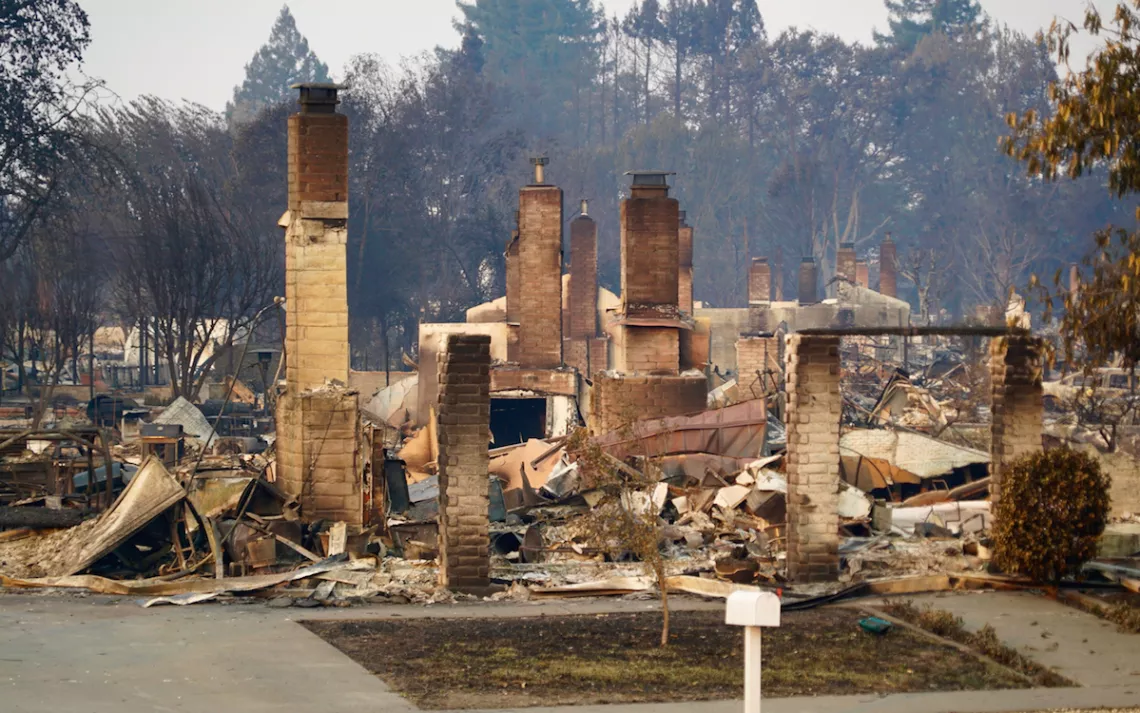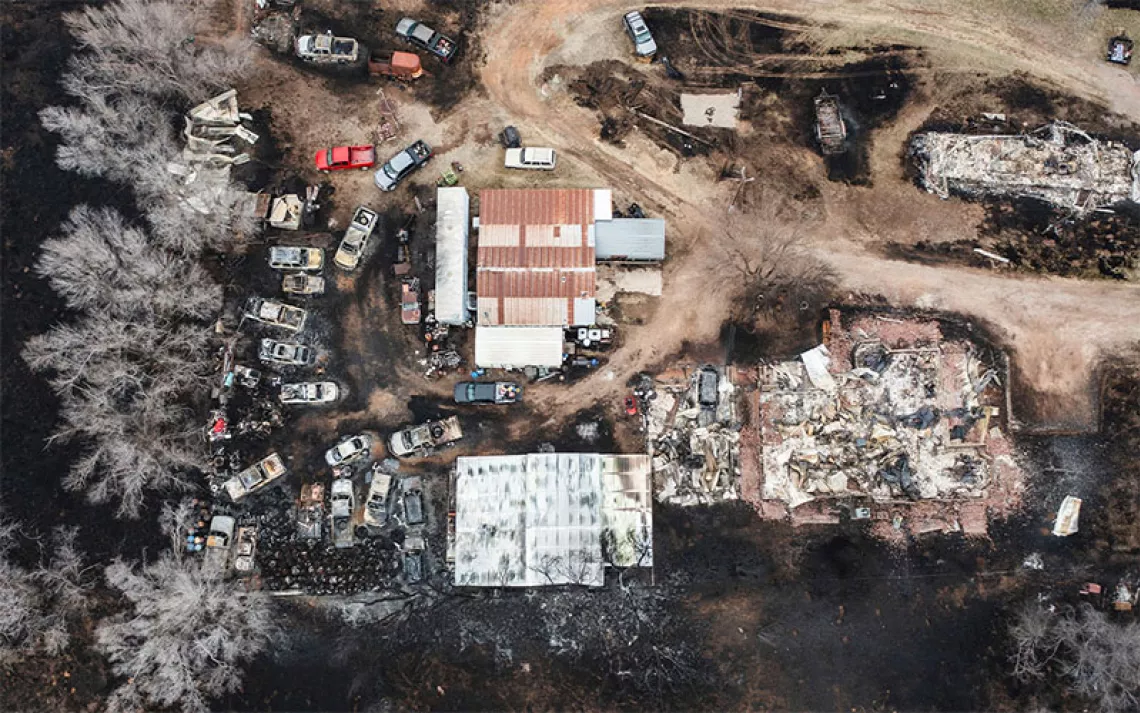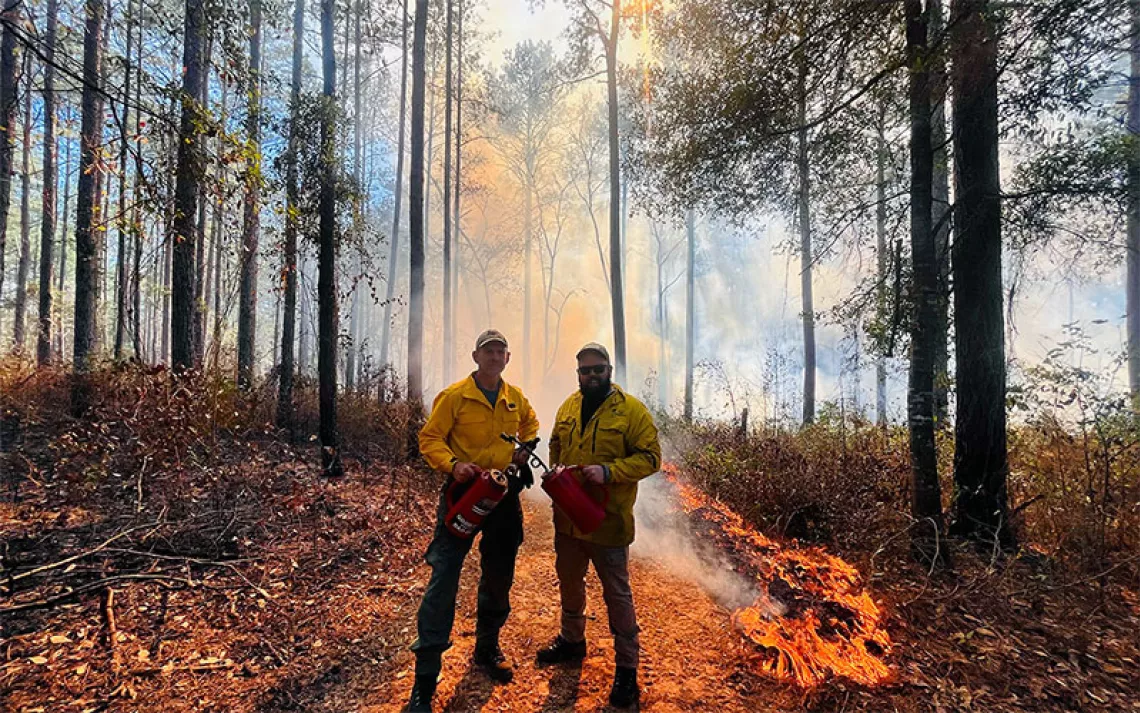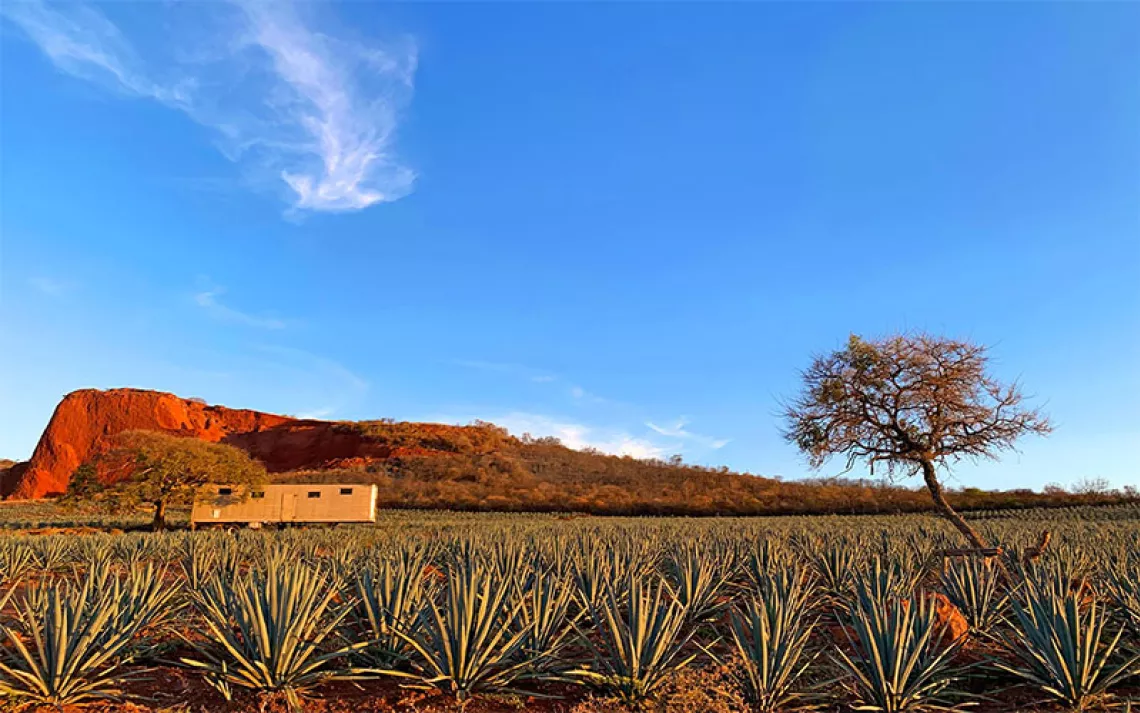5 Ways to Protect Your Home From Wildfires
Expert-recommended strategies for next fire season
The wildfires that ravaged 245,000 acres in four Northern California counties are fully contained, but we still don’t know the full extent of the damage. Inspectors have tallied more than 42 lost lives and 8,000 destroyed buildings. However, those numbers will likely rise in the coming months, now that the areas can be more safely assessed.
As warming temperatures turn swaths of vegetation into kindling, devastating conflagrations like the Tubbs, Atlas, and Nuns Fires—the most dire markers of California’s deadliest fire season on record—will likely become more common. In 2015, a record 10 million acres burned from wildfires throughout the United States, and this year more than 8 million acres have burned. Those who live in wildfire-prone regions throughout North America now fear “the big one” more than ever.
So what can homeowners do to prepare for the next wildfire season? Many inflammatory factors—the climate’s changing state, corporate negligence, and forest management policies that go back decades—seem out of our control. Still, experts who study wildfires say there’s a lot we can do as individuals to protect our homes from burning.
After all, one’s home is often “more ignitable than the vegetation surrounding it.” This is according to Michelle Steinberg, director of the National Fire Prevention Agency’s (NFPA) Wildfire Division, who describes a common sight after wildfires in urban areas: smoking holes in the ground where houses once stood, surrounded by green trees. Steinberg explains that wildfire doesn’t simply march across a landscape incinerating everything in its path; it needs fuel sources to burn through. When it crosses the wilderness-urban divide and becomes what scientists describe as an “urban conflagration,” manmade structures replace trees and grasses as kindling. Recent urban conflagrations like the Tubbs Fire in Sonoma are particularly devastating because houses are so inherently flammable.
Thus, the goal of wildfire preparation measures is not to fireproof your home and property, but rather to limit its ability to act as a fuel source. “You’re not gonna eliminate all fire,” Steinberg cautions. “You’ll have some embers blowing in, maybe some grass catching on fire. What you want to do is eliminate its ability to do real harm.” Here are five strategies to guide your efforts, starting with the house itself and working outward.
1. Proof your roof
Embers from nearby wildfires often land on roofs, where they can ignite a blaze that quickly envelops the whole home. "A flammable roof will make the difference of your house being destroyed and not being destroyed, regardless of what else you do," says fire scientist Jack Cohen. The best possible protection in this case? A roof constructed from nonflammable materials like asphalt shingles, metal, slate, or tile. While wood shingles are the most common flammable roof covering material, homeowners who don’t want the hassle of reroofing can treat their wooden roofs with fire retardant, or install a rooftop sprinkler system. However, experts warn that such solutions may be inadequate—so you might want to consider changing materials altogether. “A nonflammable roof is easy to achieve,” says Steinberg. “If you get a typical asphalt shingle roof with a good installation, you really don’t have to worry too much.”
Also note that leaves and pine needles that collect in gutters make for a dangerous ember landing bed. Make sure to clean your roof’s gutters regularly.
2. Keep embers out
Houses are inevitably filled with flammable materials (carpets, shades, furniture) so if embers have the potential to blow inside, virtually no home is safe. Thus, a second axiom to guide your fire-protection measures: Keep embers out. Cover any exterior vent openings with ⅛-inch hardware cloth. If you have a doggy door, make sure it seals properly, and leave it closed during fire season. Embers often penetrate through rooftop openings, so replace missing shingles or tiles, and caulk any cracks.
Windows are another wildfire weak point. Radiant heat can melt plastic skylights and cause glass windows to crack or even burst, allowing embers into the house. Double-paned and tempered glass do a better job of withstanding high temperatures.
3. Secure the perimeter
Once you’ve focused on protecting your roof and keeping embers at bay, you should start to consider the five feet surrounding your house. After all, something catching fire alongside a home can be as disastrous as a mattress burning within it. “From the fire’s point of view, if it’s attached to or touching the house, it’s part of the house,” Steinberg says. Firewood stacks and propane tanks are an obvious danger—the NFPA advises moving them at least 30 feet away from the house. If you have any materials from building projects lying against the house, move those away, too.
Those tips may seem obvious, but homeowners often miss less conspicuous combustibles. “Anything organic is a fuel source,” Steinberg says. Mulch is a common culprit, as embers can easily set fire to the organic fertilizers that often line house-adjacent planting beds. The NFPA recommends replacing any organic mulch within five feet of your house with gravel or stone mulch products. Plants containing oils and resins, like juniper and pine, are also particularly dangerous. In general, make sure to regularly water and maintain any plant life near the house.
The NFPA recommends separating wood fences from the house with a masonry or metal barrier. After all, if wooden features attached to a home ignite, they will carry fire to the main structure. If you have a wooden deck, make sure to clear it of debris, and to regularly clean out any dead vegetation underneath.
4. Create a “defensible space”
The “home ignition zone” encompasses the house itself and everything up to 100 to 200 feet around it. Radiant heat from a severe wildfire can ignite a house from up to 100 feet away, and if there’s enough combustible material in the way, the flames themselves can quickly travel that distance. So if you happen to live in a wildfire-prone area, safeguarding just your home and the five feet surrounding it leaves significant risk on the table.
The area between 30 and 100 feet of a home is a property’s front-line defense against a wildfire. The principle guiding your preparation in this zone should be to create a “defensible space” that can prevent flames from approaching your home, and give firefighters a safe place to combat the blaze. Cal Fire and NFPA have great resources that outline the creation of a defensible space. For instance, once you remove fuel sources from the area immediately surrounding the house, the area between 30 and 100 feet out should be maintained as a “reduced fuel zone.” In this zone, plants should be spaced out, low-hanging tree branches should be pruned, and all vegetation should be watered regularly.
Steinberg notes that some homeowners go overboard when creating a defensible space by clearing the area surrounding their home of all vegetation. It seems counterintuitive, but well-spaced plant life can actually block wind-blown embers from reaching your home. A defensible space completely devoid of vegetation creates a “bowling alley” for embers, warns the California Chapparal Institute.
5. Work together
Even the most well-prepared home is in serious jeopardy in the event that neighboring houses ignite. If you live in a densely populated area, your home is ultimately only as fire-proof as your neighborhood’s weakest links. “Some people are closer than 100 feet to the next neighbor, and you don’t necessarily have control over that,” Steinberg says. “In that case, the stuff in my yard or in my house is gonna affect whether or not your house ignites.”
Community-organized fire preparation can thus be as important as what you do on your own property. The U.S. Forest Service has a program that helps build “fire-adapted communities," and more than 1,400 sites nationwide have implemented community-level wildfire action plans under NFPA’s Firewise recognition program. Check these resources to find out how you can get involved in making your community a safer place.
 The Magazine of The Sierra Club
The Magazine of The Sierra Club








